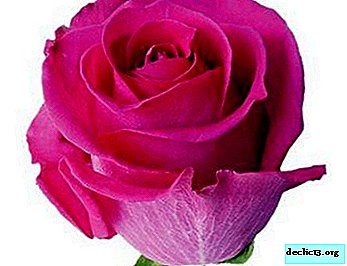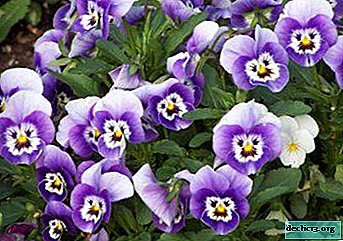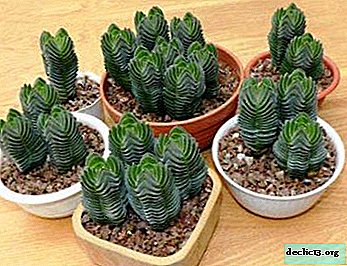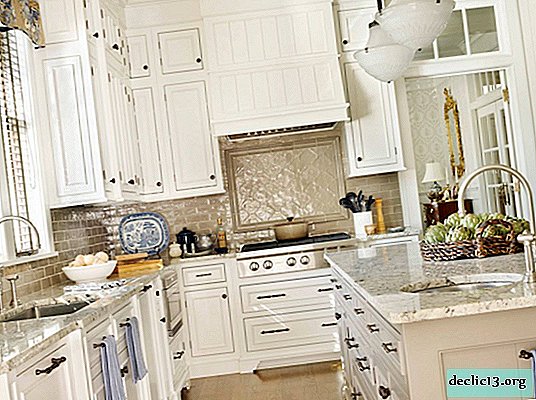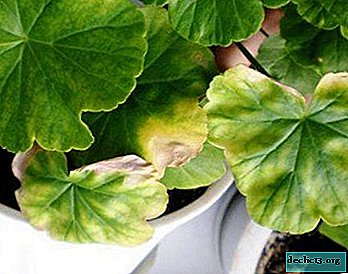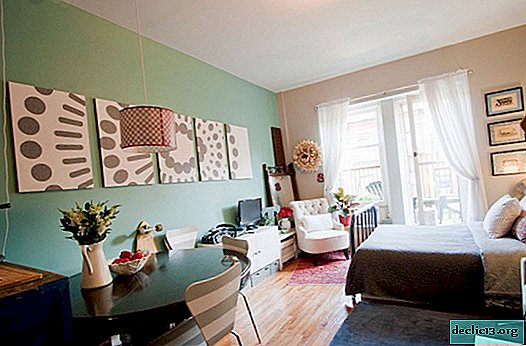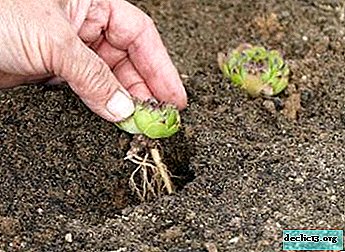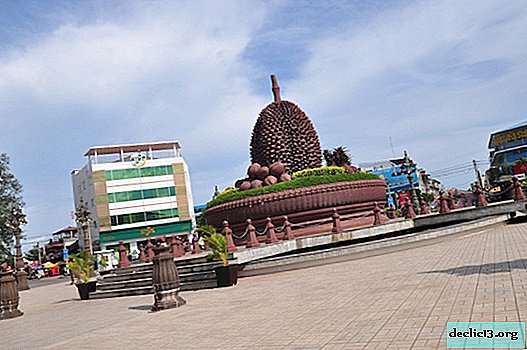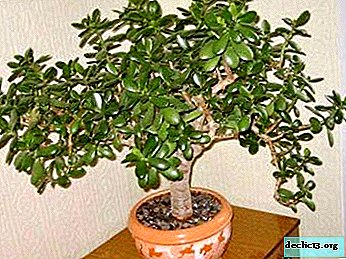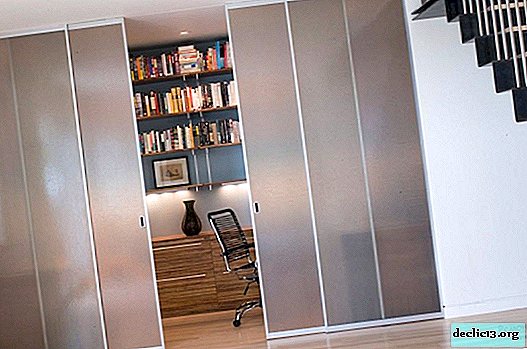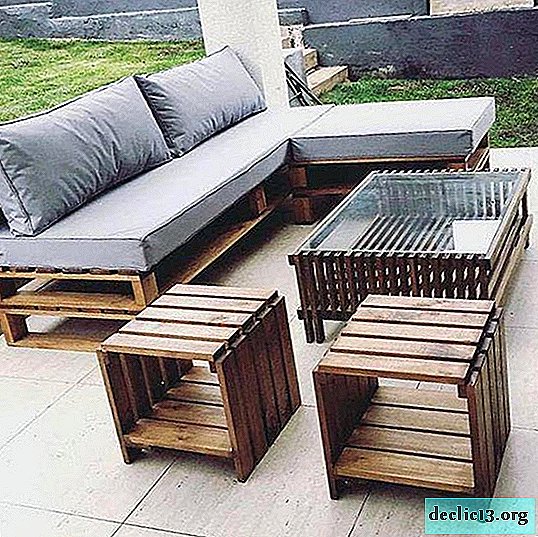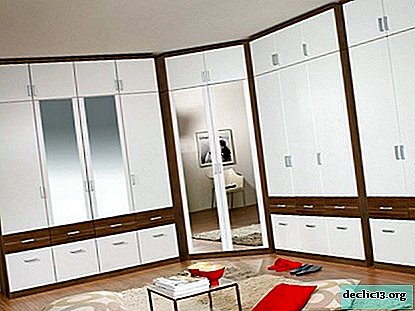Why should you have Kamchatka stonecrop at home? Description, photo of plant varieties and care tips
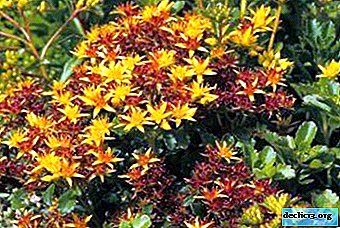
Kamchatka viviper, which earlier was also called stonecrop or sedum Kamchatka, is a hardy plant. It can survive in cold climatic conditions, it is not moody to the composition of the soil and is very resistant to diseases and garden pests.
In the article, we will consider what this plant is, see how varieties and species look, and also learn how to properly care for a flower.
Description
Title
Sedum Kamchatsky (Sedum kamtschaticum) - the scientific name of stonecrop, the names are synonyms of one plant. Scientists in the 20th century divided the genus of stonecrop into several subgenus:
- Stonecrop (sedum).
- Accountant (Hylotelephium).
- Zhivuchnik.
- Fedimus (Aizopsis).
In the literal translation, the tender means "eternal", "everlasting", which characterizes the variety with special endurance and unpretentiousness.
Also, this variety is called the Far Eastern species, which includes up to 35 - 40 subspecies. In everyday life they call young fry, hare cabbage, violin.
Botanical characteristics, homeland and prevalence
Kamchatka vivipar belongs to the common genus of stonecrops of a huge family Crassulaceae. The species is widespread in Japan, Korea, and the Far East.
In nature, prefers rocky slopes, rocky terrain. The plant belongs to perennial grassy ground cover plants. This variety belongs to mid-sized species, the height of an adult bush is up to 30 - 40 cm in height. The root is dense, lignified and branched with age.
What does the stonecrop look like?
Kamchatka Zhivichnik is a common decorative variety. The bush is compact, dense. Small shoots, upright, take root at the base of the bush, height up to 30 - 35 cm.
The leaves are saturated green, oblong, 4 - 5 cm in length. Leaves are most often bare, glossy, hairy varieties are less common. The sheet plate at the top has large notches, at the base - a blunt shape. Grow alternately or opposite.
The flowers are small, up to 2 cm in diameter, star-shaped. The flowers are collected in thick, large, corymbose inflorescences of an umbrella shape. Petals up to 1 cm long, yellow, varieties with orange, lemon shades are found. Inflorescences of medium size, with a diameter of up to 11 - 13 cm.
The flowering is plentiful, occurs in June, lasts 2 to 3 weeks. The fruits ripen in late summer, have a red color. Seeds are oblong, small.
Important: leaves and shoots die off in the winter, in the spring new shoots appear from the underground bud.Similar plants
- Sychotinsky viviparis is similar to Kamchatka sedum with splendor of yellow inflorescences. The bush is low, compact.
- Kalanchoe Alexandra has a similar serrated shape of oblong dark green leaves and a yellow flowering color.
- Strawberry multiflorum has stellate flowers of saturated yellow color. The foliage is bright green, curly, jagged.
- Grey's godson and Kamchatka sedum have a corymbose shape of inflorescences, yellowish flowers.
- Zhivumnik coastal has a glossy leaf plate and loose dense inflorescences of soft yellow small flowers, like the Kamchatka variety.
Is it easy to grow and how long does it live?
Sedum Kamchatsky is a drought tolerant species, tolerates bright sun. It grows in loamy and rocky substrates, does not require abundant fertilizer.
This species is considered frost-resistant; the bushes tolerate winter well. The plant easily adapts in temperate and northern latitudes. Withstands winter temperature drops to 16 - 18 ° C. It can do without transplantation for 4 - 5 years without losing the attractiveness and decorativeness of the bush.
Differs in plentiful bright continuous blossoming. With proper care and timely rejuvenation of the bushes, it can grow on the site for more than 10 years.
Important: usually planted in open areas, rocky gardens, alpine hills, mixborders, multi-tiered flower beds.Varieties and their photos
Floriferous
The most common variety. The stems are low, up to 30 cm in height, weakly branching, slightly raised. The leaves are dark green, graceful, with small denticles along the edge. The flowering is magnificent. The flowers are yellowish, have five pointed petals.
Weichenstephaner Gold

This is a hybrid grade of flower-bearing sedum. It is distinguished by its special endurance, grows rapidly, requires transplantation after 2 - 3 years. The flowering is plentiful, lush. The flowers are small, star-shaped, yellow in color with a greenish tint. The leaves are curly, with notches on the top, glossy, dense.
Variegated, or Caramel

Perennial low, stems raised, up to 20 cm in height. It is characterized by moderate growth, frequent bush rejuvenation is not required. The leaves are densely planted on the stem, juicy. Three-color sheet plate - the sheet is bordered with a white stripe. In bright light, the leaf around the edge acquires a pink tint. The flowers are distinguished by motley colors - bright yellow, with a red - orange core. Blooms in June for a month.
Ellacombianum

Hybrid Japanese variety (Hokkaido Island). The bush is undersized, dense, growing in a hemisphere. The variety belongs to ground cover varieties. The leaves are bright green, do not fade in the sun. It can grow both in the sun and partial shade. The flowers are small, up to 1.5 cm in diameter, are combined into dense corymbose inflorescences of a yellow hue.
Golden Carpet

The bush is loose, sprawling, the height of an adult plant is up to 35 cm. The stems are dark, erect. The leaves are oblong, green. The flowers are saturated yellow, small, connected in inflorescences with a diameter of up to 10 - 12 cm. Flowering is long. The variety is cold-resistant, tolerates the sun and drought well.
Takahira Dake

Hybrid undersized variety. The bush is dense, compact. The stems are red, straight, few in number. The leaves are curly, with notches, dull at the base. The sheet plate is glossy, shiny, dense, bright green.
Care
Lighting and location
Kamchatka Sedum prefers sunny glades on the south side of the house. Acceptable diffused lighting with slight shading in group plantings under tall bushes.
From a lack of light, the stems are pulled out, the flowers and leaves become smaller, the shape of the bush loses its decorativeness.The soil
The variety is undemanding to the soil. It grows in loamy, sandy and rocky substrates.
The soil should be loose, breathable, with a good drainage layer. It is necessary to regularly loosen the topsoil, to remove weeds.
The composition of the soil mixture:
- Garden land - 2 hours
- Humus - 1 hour
- Coarse sand - 1 hour.
- Ash - 1 h.
- The drainage layer is polystyrene, brick splinters.
Top dressing
The plant does not require regular fertilizer of the soil. When planting, it is enough to fertilize the substrate with compost or humus. Complex mineral fertilizers are also introduced in small doses in early spring. From an overabundance of organic fertilizers, the bushes lose their attractiveness, become loose, the inflorescences are deformed.
Watering
This variety requires moderate watering. In the summer, it is enough to moisten the substrate 1 time in 7-10 days. In the fall, watering is reduced by 2 times. In winter, do not moisten the soil. Immediately after planting, for good rooting, watering should be frequent, in small doses. Unacceptable dampness of the soil and stagnation of water.
Pruning
Before wintering, the stems of the plant are cut, leaving 2 to 3 cm at the base. After flowering, wilted peduncles are cut. Before planting, sanitary pruning of damaged and old root processes, old stems is necessary.
Important: special shelter and sprinkling of bushes with leaves for the winter is not required.Breeding
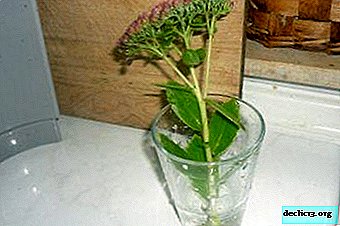 The seeds.
The seeds. Not a very convenient way, greenhouse conditions are required. Sow seeds in the spring, in March or in the fall, for the winter. Seedlings germinate within 2 weeks in good light, air temperature - at least 20 - 22 ° C. Seedlings dive when 2 to 3 leaves appear. Seedlings bloom only after 2 to 3 years.
- Cuttings.
Fairly simple and affordable way. Cuttings are cut in the spring with a size of 5 - 6 cm. Rooted in special containers. After 2 to 3 weeks, the seedlings dive into a permanent place.
- Division of the bush.
The most convenient and effective way to save varietal characteristics of the plant. The procedure is carried out in April - May. In each separated part there should be healthy shoots and part of the root system. Rooting is quick and painless. Flowering is possible in 1 year of growth.
Landing
Kamchatka sedum grows quite quickly. Be sure to rejuvenate the bushes every 4 to 5 years. Transplanting updated bushes is required. Before planting, the bushes are trimmed, the places of the cuts are processed with crushed coal. Seedlings are pre-dried for 4 to 5 hours in a well-ventilated area. For better rooting, the transshipment method is used, the earthen lump is preserved.
Important: so that the bushes grow with a dense carpet, it is recommended to place seedlings close enough to each other, at a distance of 10 - 15 cm.Possible difficulties
- From the dampness of the substrate, leaf spotting, gray rot of stems, root rot appears. Affected areas are removed.
- With a severe infection with fungal infections, the bush is completely rejected.
- From aphids, spraying with a fungicide will help. The procedure is repeated after 8 to 10 days.
- False caterpillars and weevil attack the leaves. Mechanical destruction of insects, treatment with soil insecticides is necessary.
- Powdery mildew appears from damp soil and excessive watering. An urgent transplant and substrate replacement is required.
Kamchatka Sedum or Kamchatka Zhivuchnik - grows quickly, easily propagates and takes root, does not require any special hassle, is easy to care for, and is decorative not only during flowering. The plant for a long time retains the colorful freshness of the bush.

 The seeds.
The seeds. 